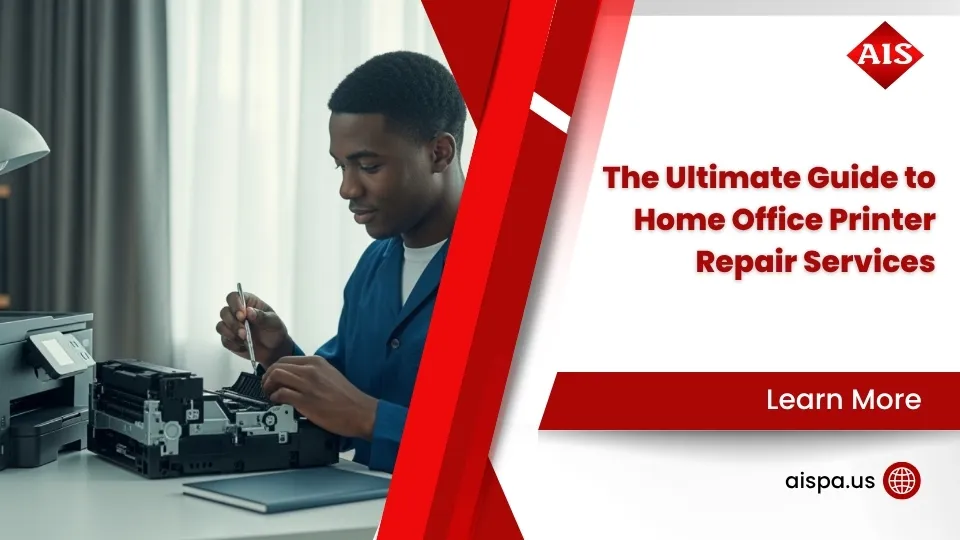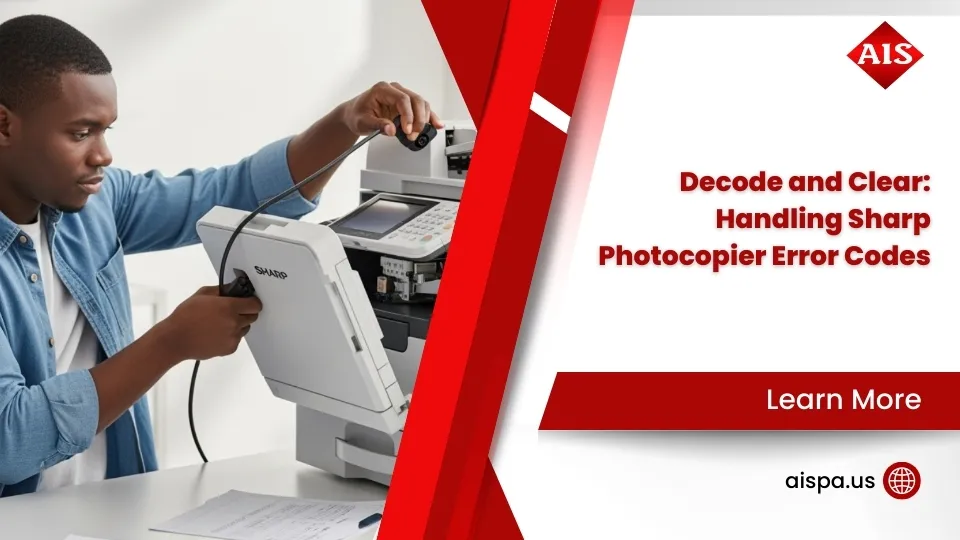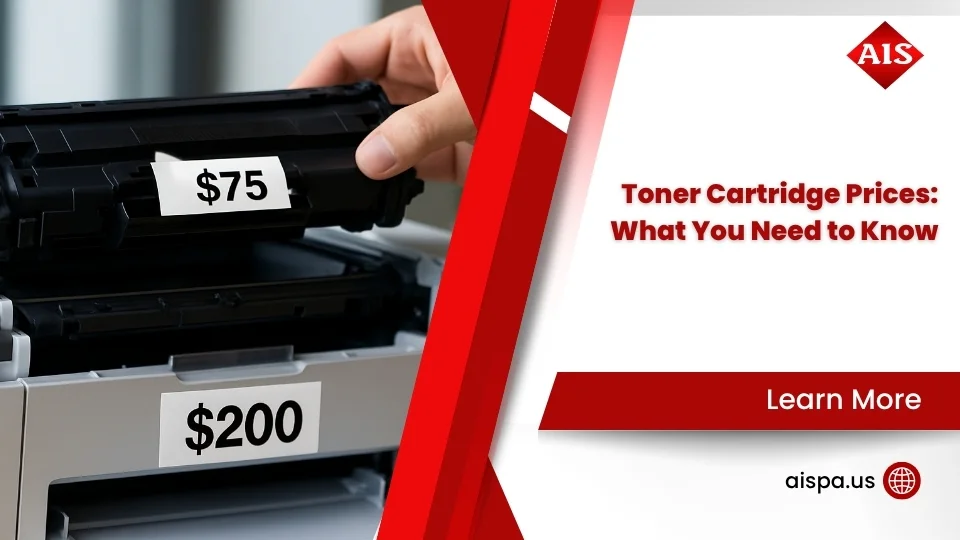How to Safely Move Copier Printer – Quick Guide
How to Safely Move Copier Printer
Moving a copier or printer might seem straightforward, but it requires careful handling to avoid damage. These office staples are more than just machines; they are the heart of our document management system, playing a crucial role in daily operations. Therefore, whether you’re relocating to a new office or simply moving equipment around, understanding the nuances of safely transporting your copier or printer is paramount.
This guide aims to arm you with knowledge and tips to ensure your move is smooth and your equipment remains intact.
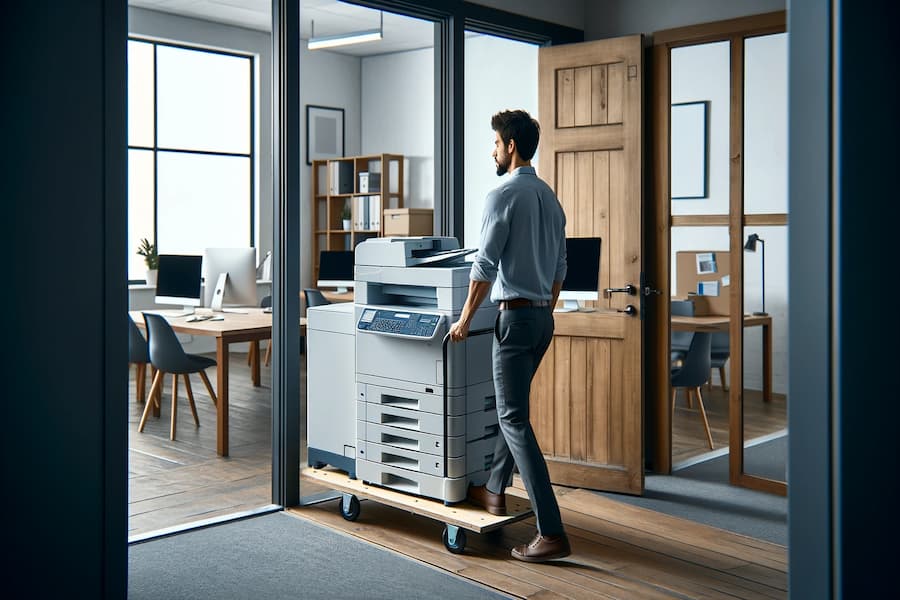
Preparing Your Copier Printer for the Move
Preparation Steps
- Consult the Manual: Start by consulting your printer’s manual or the manufacturer’s website for model-specific moving instructions. This can include how to properly package the device.
- Plan the Installation: Before moving, plan where the printer will go in your new space. A well-thought-out location can minimize future moves and disruptions.
Firstly, you need to remove the paper from trays to prevent jams and potential damage. Disconnecting cables is crucial; unplug the power cord and any network cables to avoid snags. Securing movable parts is next; tape down any loose components such as the copier glass and trays to prevent them from shifting during the move.
For instance, a piece of advice from Xerox emphasizes the importance of consulting your user manual for specific instructions on moving your model. Similarly, Canon provides detailed guidance on preparing their printers for transportation, ensuring you don’t overlook critical steps.
In addition, it’s wise to remove the toner or ink cartridges to prevent leaks. Place these in a secure bag or container. Remember, moving your printer or copier is not just about relocating a piece of equipment but ensuring it arrives ready for immediate use. For those unsure about any step, it’s always best to contact the manufacturer or consult professional office movers for advice.
Packing Materials and Techniques
Choosing the right packing materials is critical for protecting your equipment during the move. Original packing materials are ideal, as they are designed specifically for your machine. However, if these aren’t available, bubble wrap and sturdy boxes will suffice. Wrap the printer or copier in several layers of bubble wrap, ensuring all sides are covered, and secure it with packing tape. The machine should then be placed in a box that’s been lined with additional bubble wrap or packing peanuts for extra cushioning.
For additional insights on packing techniques, only consult and get professional advice and services tailored to moving sensitive office equipment. Above all, ensuring your machine is snugly fit and protected against impact is key to a successful move.
Moving Strategies for Different Types of Copier Printers
For Small to Medium-Sized Printers
Moving smaller printers requires attention to detail to prevent damage. Firstly, manual handling of these devices should be done with care to avoid shaking or tilting, which could dislodge internal components. Lightweight printers are susceptible to impacts, so padding the moving path with soft materials can mitigate risk. In addition, using a dolly or a cart to transport the printer to the moving vehicle can minimize handling risks. Keeping the printer level during the move prevents toner or ink from spilling inside the machine.
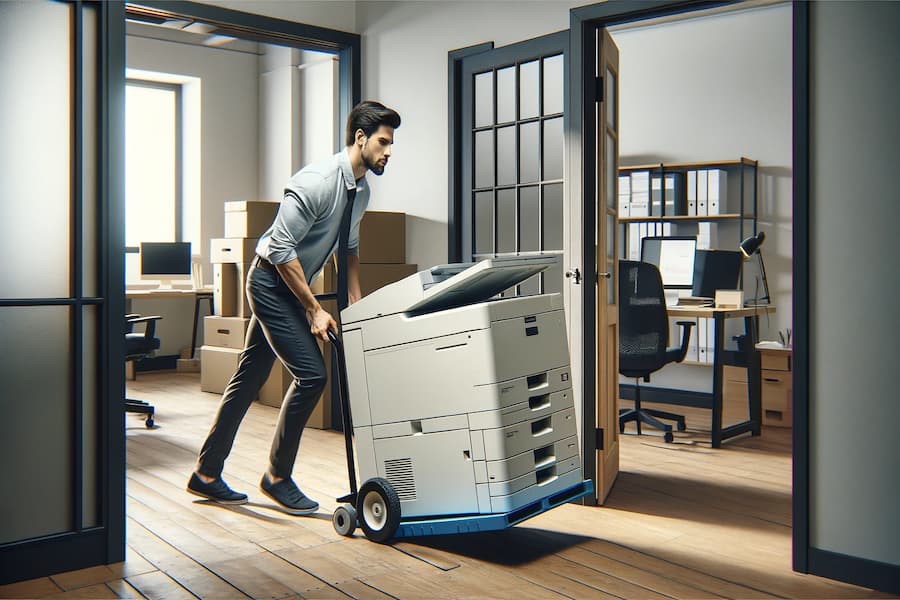
- Avoid Tilt and Rotation: Never turn the printer upside down or tilt it beyond 10 degrees to prevent internal contamination with toner, which could damage the device or lower print quality.
- Clear the Printer: Ensure the output tray and paper tray are emptied to avoid jams or spills.
- Secure the Cartridges: For long-distance moves, remove the drum and toner cartridges to prevent spillage. Always turn off and unplug the printer before moving.
For Large or Commercial Copier Printers
Large or commercial copiers and printers present a different set of challenges due to their size and complexity. In these cases, consulting with the manufacturer is vital to understand specific precautions and preparation steps. For instance, Canon and Xerox often have dedicated guidelines for moving their large-format devices. Professional office movers should also be considered, as they have the expertise and equipment to handle large machines safely.
Different companies offer specialized moving supplies that can accommodate the needs of larger office machines. Whether it’s custom crates or heavy-duty moving straps, having the right materials is crucial. Remember, the goal is to move the machine without compromising its functionality. Therefore, taking the time to secure professional help can save you from costly repairs or replacements down the line.
Moving a copier or printer, whether it’s a compact desktop model or a hefty commercial machine, demands careful planning and execution. By following these preparation and packing tips, and considering professional assistance for larger machines, you can ensure that your office equipment is transported safely to its new location. Remember, the key to a successful move lies in the details.
General Moving Advice
- Contact Support: If unsure about any steps or if you can’t find specific instructions, reaching out to support experts at your printer’s vendor is advisable.
- Follow Manufacturer Guidelines: Major manufacturers provide detailed instructions for safely moving their machines. Following these guidelines can help protect your investment.
Professional Moving Services vs. DIY
Benefits of Professional Moving Services
Choosing professional office movers for your copier or printer comes with several benefits. Firstly, these experts bring a wealth of expertise to the table. They understand the nuances of handling office equipment, ensuring safe transport from one location to another. Their equipment, designed for moving heavy and delicate machinery, minimizes the risk of damage. Additionally, professional services often include insurance coverage. This means if your copier or printer is damaged during the move, you’re covered.
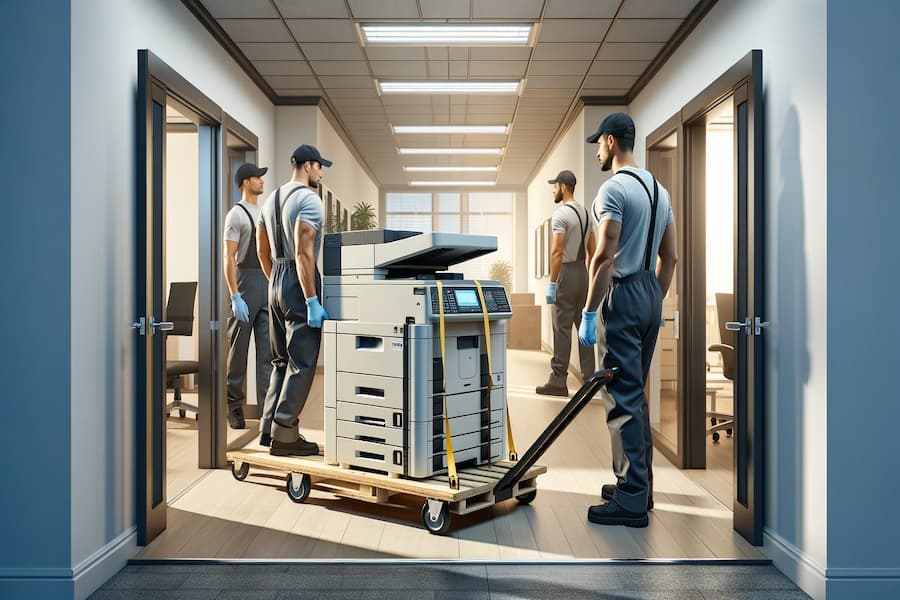
Professional movers also save you time and prevent potential injuries from lifting heavy items. They can navigate challenges like narrow hallways and stairs with ease. For businesses, this means less downtime and more focus on operational activities. Above all, the peace of mind knowing your valuable office equipment is in capable hands is invaluable.
DIY Moving: When It Makes Sense
DIY moving can be suitable for smaller printers or when moving short distances within the same office space. In these cases, taking precautions is key. Ensure you power down and unplug the device, detach all network cables, and remove the toner cartridges to avoid spills. Using a dolly can help move the printer safely, especially if you have to navigate through tight spaces.
Before moving, it’s important to consult the owner’s manual for any specific instructions related to your type of printer. Wrapping the printer in shrink wrap can protect it from dust and minor bumps. If you’re moving a photocopier, especially one that’s large or complex, consider at least consulting with a professional about the best way to remove and secure parts.
Post-Move Setup and Testing
Setting Up Your Copier Printer at the New Location
Once at the new location, carefully unbox and place your copier or printer in its designated spot. Reconnecting cables and installing cartridges should be done with care. Follow the instruction manual to ensure you reconnect everything correctly.
For multifunction printers (MFPs), reattaching any accessory like finishers, sorters, or paper trays is vital. Ensure each part clicks into place securely. Office equipment often requires recalibration, so check for any specific steps when moving the model you have.
Testing and Troubleshooting
After setup, testing your copier or printer is crucial. Print a configuration page to verify all settings of the device are correct. If you encounter any issues, such as poor print quality or error messages, refer to the troubleshooting section of your owner’s manual. Common post-move issues may include misaligned components or connectivity problems, which can often be resolved with simple adjustments.
What People Also Ask
How do I prepare my printer for moving?
To prepare your printer for moving, first ensure the device is powered off to prevent electrical issues. Then, carefully remove any ink or toner cartridges and paper to avoid spills or jams. Lastly, secure all moving parts, such as trays and covers, to prevent damage during transport.
Can I move my office copier myself?
Yes, you can move your office copier yourself if it’s a smaller model. Ensure you use proper packing materials to protect the device and follow the manufacturer’s instructions for securing movable parts and removing consumables. However, for larger, more complex copiers, enlisting professional movers is advisable to avoid damage.
What should I do immediately after moving my printer?
Immediately after moving your printer, set it up following the manufacturer’s guidelines to ensure it’s correctly configured for use. Reconnect all cables and install any ink or toner cartridges that were removed. Finally, perform a test print to confirm the printer is functioning properly and ready for use.
Conclusion
Moving your copier or printer requires careful planning, whether you opt for a DIY approach or professional help. By following the guidelines outlined above, you can ensure your office equipment arrives safely at its new destination. Remember, taking the time to prepare and test your printer or copier post-move can save you from potential headaches. Approach the moving process with care and attention to detail, ensuring your valuable equipment continues to serve your business needs without interruption.
Remember, the key to a successful move lies in careful planning and following the recommended procedures to protect your printer from damage. This approach ensures that your printer remains in top condition, ready to serve its purpose in its new location.
For more information and services you can contact us for a free quote and estimation.
- Address: 165 Veterans Way, Warminster, PA 18974
- Email: sales@aispa.us
- Call Us: (215) 999-8445




